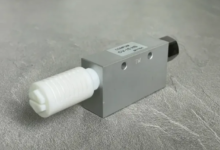Is Industrial Robot Welding Worth the Investment? ROI Insights

Industrial robot welding is quickly gaining attention as manufacturers look for smarter ways to improve productivity and cut long-term costs. While the upfront expense of robotic systems can be significant, their ability to deliver consistent quality, reduce waste, and minimize labor risks makes them a valuable asset for many industries.
The real question for business owners is whether the return on investment justifies the cost. In this article, we’ll explore ROI insights to help determine if industrial robot welding is truly worth the investment.
Understanding the Costs of Industrial Robot Welding
When thinking about robotic welding, you need to consider both the initial costs and ongoing expenses.
Initial Investment:
Robot Hardware, Software, and Integration: Covers the cost of the robot, its software, and setting it up to meet your production requirements.
Installation and Training: Includes expenses for installing the system and training operators to use it efficiently and safely.
Ongoing Costs:
Maintenance and Servicing: Regular upkeep and any necessary repairs to ensure the robot operates reliably.
Consumables and Energy: Costs for welding materials (wire, gas, electrodes) and the electricity required to run the robot.
Evaluating the Total Cost of Ownership (TCO)
When thinking about robotic welding, it’s important to look at the Total Cost of Ownership (TCO), which covers all costs involved in using the system:
- Initial Setup: The cost to buy and install the robot.
- Operational Expenses: Ongoing costs like welding materials, energy, and regular maintenance.
- Downtime: Potential losses if the system stops working or runs inefficiently.
- Scalability: Future costs for upgrading or expanding the system as needs grow.
Knowing all these costs allows manufacturers to make informed choices and maximize the benefits of their robotic welding investment.
See also: English Sikho: Best Apps and Techniques to Improve Fluency
Benefits of Driving ROI
Automated welding can significantly enhance manufacturing by boosting efficiency, quality, and safety. Here’s how it contributes to ROI:
Increased Productivity
Robots can work nonstop and finish welding tasks faster than people. This means more products can be made in less time, helping manufacturers meet tight deadlines.
Consistent Quality
Automation ensures precise and uniform welds, reducing mistakes and defects. Fewer errors mean less rework, higher product quality, and greater customer satisfaction.
Labor Savings
Robots take over repetitive welding tasks, allowing skilled workers to focus on more complex work. This reduces the need for overtime and lowers staffing costs, making operations more efficient.
Lower Waste and Material Costs
Robots perform welding with high precision, minimizing material waste and using supplies like wire, gas, and electrodes more efficiently. This precision reduces production costs and improves overall efficiency.
Improved Safety
Automated welding reduces human exposure to hazardous tasks, lowering the risk of workplace accidents and potentially decreasing insurance and liability costs.
Automated welding delivers a strong return on investment for manufacturers by increasing production, ensuring consistent quality, reducing labor costs, minimizing material waste, and enhancing worker safety.
Calculating ROI for Robotic Welding
Calculating the return on investment (ROI) for robotic welding, such as Techman Robot systems, involves comparing costs with the benefits across productivity, quality, and labor.
Initial Costs vs. Savings:
This compares the total upfront costs, such as the robot, installation, training, and any facility modifications. These savings come from reduced labor requirements and lower material waste due to consistent welds.
Productivity and Downtime:
Robotic systems can operate continuously, boosting production output and minimizing unplanned downtime, ensuring smoother and more reliable operations.
Quality Improvements:
Robotic welding delivers precise and consistent welds, reducing defects and rework. This improves overall product quality and enhances customer satisfaction.
Tools for Estimation
When considering robotic welding, it’s important to estimate the potential return on investment (ROI) before making a decision. You can do this in two main ways:
Online ROI Calculators:
These are web-based tools where you enter information like the cost of the robot, expected labor savings, material savings, and production rates. The calculator then estimates how long it will take to recover the investment and the potential long-term savings.
Consulting Automation Experts:
Experts can analyze your specific production environment, including workflow, labor costs, and material usage. They provide a tailored ROI analysis that considers all relevant factors, giving a more accurate picture of the benefits and payback period for your operation.
By analyzing costs, savings, productivity, and quality benefits, manufacturers can make informed decisions and clearly understand the expected returns from robotic welding.
Factors Affecting ROI
Size of Production Line and Volume:
Robotic welding is more cost-effective for large or high-volume production. The more the robot is used, the faster it pays for itself. Small production lines may take longer to see savings because the robot isn’t fully utilized.
Complexity of Welding Tasks:
Robots are best for precise or complicated welding jobs that are hard to do by hand. They reduce mistakes, scrap, and rework, improving both quality and efficiency. The more difficult the welding task, the more money and time can be saved.
Integration with Existing Workflows:
Robots deliver the best results when smoothly integrated into existing manufacturing processes. Proper integration ensures efficient production, while poor integration can cause delays, inefficiencies, and lower ROI.
Training and Operator Skills:
Robots require trained operators to work effectively. Skilled operators can program, run, and maintain the system efficiently, ensuring smooth operation. Without proper training, mistakes and downtime can reduce productivity and lower the return on investment.
Maintenance and Support:
Regular maintenance and reliable technical support keep the robot running smoothly. Quick repairs prevent costly downtime. Without proper support, unexpected breakdowns can reduce efficiency and ROI.
When Industrial Robot Welding Makes Sense
Robotic welding is a smart choice when specific conditions are present, offering clear benefits in efficiency, safety, and cost savings. Key situations include:
High-Volume Production
Robots are ideal for producing large numbers of similar parts. They work continuously, maintain consistent weld quality, and increase output.
Precision and Consistency
Industries like aerospace, automotive, and medical devices need precise, uniform welds. Robots perform complex welds accurately, reducing defects and rework, which improves product quality and customer satisfaction.
Hazardous Work Conditions
Robots improve safety by taking on tasks in dangerous environments, such as high temperatures or tight spaces. This reduces accidents and associated costs, keeping workers safe in industries like mining and construction.
High Labor or Material Costs
In areas with high labor costs or shortages of skilled workers, robots handle repetitive welding tasks, saving on labor. Their accuracy also reduces material waste, lowering production costs.
Robotic welding is most valuable when production is large, precision is essential, conditions are hazardous, or labor and material costs are high. In these cases, it improves efficiency, safety, and overall cost-effectiveness.
Conclusion
Industrial robot welding offers significant benefits, including increased productivity, consistent quality, improved safety, and reduced costs. Manufacturers should carefully evaluate their production needs and consider the long-term advantages, such as labor savings and lower material waste. Although the initial investment can be high, robotic welding can deliver substantial returns for the right manufacturing environment, making it a smart and strategic choice.






